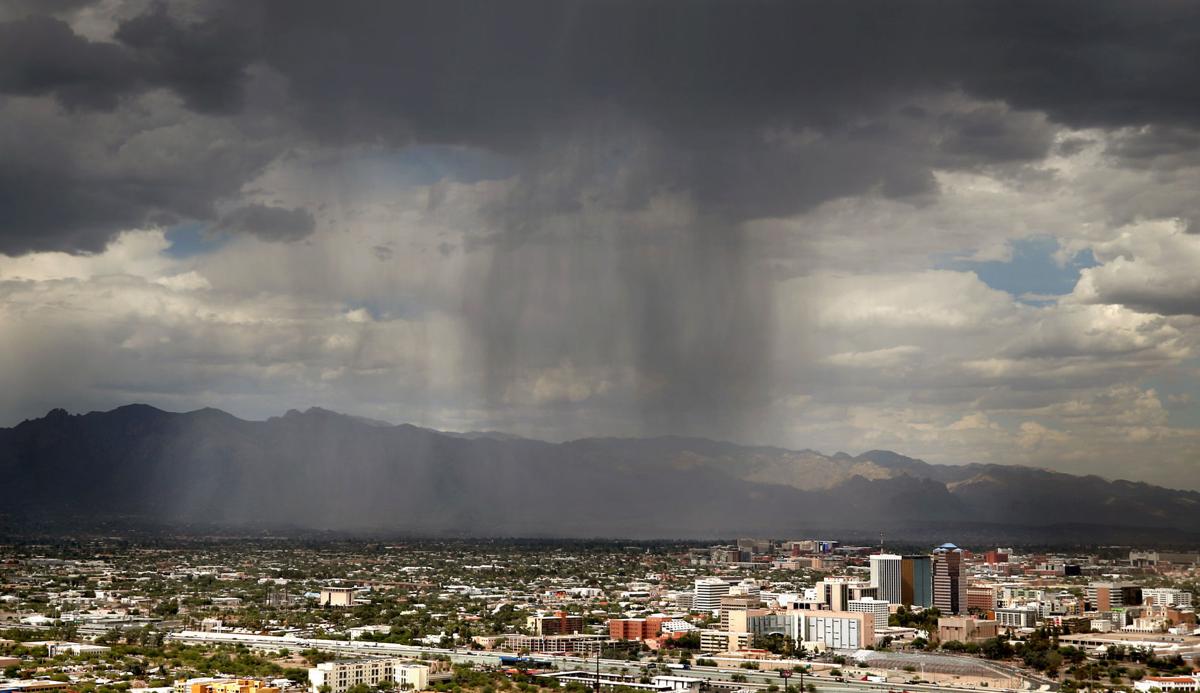The southwestern monsoon has swept across the landscape every summer as far back as the last ice age, when mammoths roamed the continent and ice sheets edged below what is now the Canadian border, according to a newly released study by University of Arizona researchers.
The team discovered that 20,000 years ago, summer rains made up only about a third of yearly rainfall in the Southwest. Comparatively, the modern monsoon contributes about 70 percent of annual rainfall in the region.
Before the UA team’s work was published in the journal Nature Geoscience earlier this month, scientists in the field weren’t sure if the southwestern monsoon shut down during the last ice age or if it was simply weakened. This research showed the summer storms were evident during the ice age, but that they were not as strong as they are today.
The research not only creates a picture of summer weather patterns thousands of years ago, but this new knowledge also gives more power to models used to predict the future of the monsoon as the climate warms.

Droplets from a monsoon shower cloud the image of a saguaro at Saguaro National Park East.
Reading the rain
Summer and winter rains have distinct chemical signatures that can be stored in the wax coating of the leaves of southwestern plants. Leaves fall to the ground, degrade and turn to dust. The chemical signature in the wax coating remains. Over time, that dust mixed with traces of wax gets blown into the Gulf of California, where it settles on the sea floor year after year.
The team chemically analyzed samples of ancient mud plucked from the Gulf of California, nearly 1,000 meters below the sea surface. They measured the different ratios of distinct signatures of summer or winter rain.
The technique allowed the team to read the history of the monsoon over tens of thousands of years, said the study’s lead author, Tripti Bhattacharya, now an assistant professor of earth sciences at Syracuse University in New York.
Jessica Tierney, co-author and associate professor in the UA’s department of geosciences, pioneered the technique of reconstructing the history of rainfall using leaf wax. Now she’s applying it to her work with Bhattacharya, who did the work for this study while she was still at the UA.
Other co-authors facilitated access to samples and include Jason Addison at the U.S. Geological Survey in Menlo Park, California, and James Murray at the University of Washington’s School of Oceanography.
The team compared its deep-sea measurements with computer simulations of the monsoon during different times in earth’s history to validate its theoretical understanding of our summer rains.
According to the team’s models, “Ice sheets alter the circulation of the atmosphere in a way that inhibit summer rainfall over the Southwest,” Bhattacharya said. As the world warmed and glaciers retreated, monsoons strengthened.
“But in terms of modern climate and glacial retreat, it’s probably not working the same way,” she said, now that they know ice-sheet changes are communicated to the Southwest through the jet stream, a meandering band of fast-moving winds high in the earth’s atmosphere that girdle the Northern Hemisphere.
Researchers also found that our monsoon seems to be much more sensitive to the large-scale changes in the atmosphere, whereas other monsoon systems around the world are tied more closely to local ocean conditions.
“For a long time, we haven’t had reliable data that provided a record of the long-term evolution of the monsoon,” Bhattacharya said. That’s because finding a way to untangle summer and winter rain signals was very difficult.
Now, leaf waxes are used to discern the summer rain signal.
The paper has been well-received, thanks in part to the fact that the team used a combination of sea-floor samples and models to verify its findings. Where people might disagree, she said, is on what the studies of the past might mean for the future.
“The past is like natural experiment to understand how the climate works,” Bhattacharya said, “but there are many different scientific lessons you can take from the past and that is hopefully where this work will go in the future.”
At Syracuse, Bhattacharya hopes to continue studying the monsoon in the American Southwest and in other regions, such as Southeast Asia.
She and Tierney would also like to look further back into the past, as far as 3 million years ago when carbon dioxide, a greenhouse gas driving rising global temperatures, was at levels similar to today.
“The monsoon is key to the rhythms of life and culture in Arizona,” Bhattacharya said, “and studies like these tell us that climate change can influence the monsoon, but also reveal how it has been a persistent feature on the landscape for a long time.”








